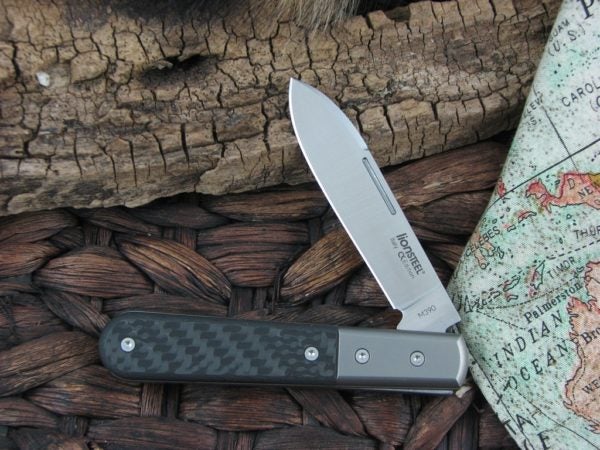One to Watch: Lionsteel Roundhead
Tony Sculimbrene 08.29.17

The traditional knife market, full of blades your grandpa would recognize, has been super hot recently. A Facebook group, Slipjoint Paradigm, has done a great job of reminding the Internet Knife Community that, guess what, these old timey knives do all sorts of great and crazy things like: cut stuff, carry well, and don’t scare the bejeezus out of people. ZT452, these ain’t.
The seemingly sudden and obvious realization that most people aren’t served well by EDCing a 4.5” tactical flipper with a blade thicker than a smartphone has given rise to all sorts of wonders. Great Eastern Cutlery has pumped out a slew of blades with beautiful shapes, thin and slicey blades, and warm and wonderful handle materials. Case’s Tony Bose series has produced some of the finest production knives available. And the custom world has once again turned to the beauty of the multiblade folder. We even see the rise of knives that fall somewhere between modern folders and traditionals (maditionals, troderns?), things like the joyously unusual Benchmade Proper and the surprisingly useful Spyderco Roadie.
The highwater mark for this new wave of production traditionals seems to be one of three different knives: the Tom’s Choice series from GEC, some of the last gasp Canal Street Cutlery knives made before the company folded, or the KnivesShipFree exclusive Northwoods Knives. But a new challenger has arise, hoping to crack that trio of sweet, sweet slicers: the Lionsteel Roundhead.
On paper there is a bunch of stuff to like about the Roundhead. First, it is one of the most beloved traditional patterns: the Barlow. The Barlow, with its rounded handle and extra long bolster, has a history few knives can rival. It was mentioned by name by Mark Twain in both the Adventures of Tom Sawyer and the Adventures of Huckleberry Finn. At a point in the 19th Century it was almost synonymous with folding knife in America. Up and down the Mississippi River, if you had a folder, it was a Barlow (in part because they were easy to make and in part because they are just darn useful).
But Lionsteel didn’t just pick the right pattern, they also picked the right steel. Unlike virtually any other traditional I can think of, the Roundhead runs the European uber steel M390. Even the trio of awesome or the Case Bose series, all of which have, on occasion dabbled in higher end steels, don’t use M390. Sure, it is tougher to sharpen than the usual choice for traditional knives, 1095, and it will not likely develop that foggy dull sliver patina that many traditional fans like (and even cultivate by forcing the patina). But it will cut like a razor for months or even a year without the need to be resharpened.
Lionsteel even gives you a selection of handle materials–carbon fiber, stag, abalone, ram’s horn, and cocobolo. The knives range in price from $117 to $185 and appear to be sold in America exclusively through the traditional knife site Collector’s Knives. Only the pricier abalone version are still available.
From pictures and specs alone, I can see the appeal. This is a good looking knife with great steel, but two things have me a bit worried. First, there are four (!) screws on the handle of the knife, including two on the bolster. These visual pockmarks really detract from the blade and defy the clean pinned look historically associated with the Barlow. Second, the high exposed rear tang looks like it could be a snag magnet, especially when compared to the more refined rear tang of something like the Canal Street Cutlery Boy’s Knife, another small Barlow.
Still, the price and the steel are right. It will be interesting to see if other makers jump into this hot part of the market.